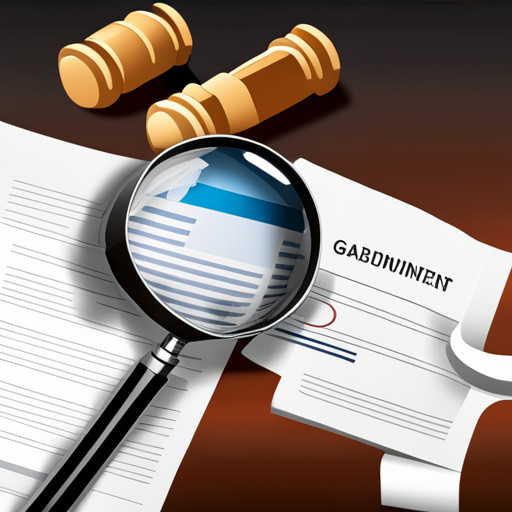Pain and Suffering in a Personal Injury Lawsuit Claim
In the realm of personal injury claims, the concept of 'pain and suffering' extends beyond mere physical discomfort, encapsulating a spectrum of distressing experiences. This article delves into the multifaceted nature of such claims, exploring the nuances of physical pain, emotional distress, loss of enjoyment, and disfigurement, while highlighting the importance of legal representation.

Moreover, it sheds light on the financial assistance available to victims and the intricacies of the funding application process.
Key Takeaways
- Pain and suffering in a personal injury claim can include various types of physical pain, such as pain from the initial injury, ongoing severe pain, soreness, stiffness, and headaches during recovery, as well as pain from medical treatments and nausea and vomiting caused by pain or medications.
- Emotional distress and loss of enjoyment of life are valid components of a personal injury claim, as experiencing a violent and painful injury can have a significant impact on the mind and body. Symptoms of emotional distress should be discussed with a healthcare professional, and the costs for mental health services can be compensable economic damages.
- Disfigurement, loss of function, and loss of consortium are other factors considered in a personal injury claim. Disfiguring injuries, permanent injuries, and loss of use or function of any body part or system can lead to high pain and suffering compensation. Loss of consortium refers to the loss of companionship and care in family relationships.
- Funding options are available to provide financial assistance while waiting for a case settlement and to cover personal expenses. Privacy is respected during the funding process, and alternative options for assistance may be available if the initial criteria for funding are not met. Collaboration with an experienced personal injury attorney is crucial for a successful claim.
Understanding Pain and Suffering in Personal Injury Claims

In the realm of personal injury claims, pain and suffering encompasses not only physical discomfort - ranging from the immediate pain from the injury, ongoing severe pain such as that caused by broken bones or burns, and pain from medical treatments - but also emotional distress, loss of enjoyment of life, and disfigurement or loss of function.
The concept of physical pain and emotional distress intertwine, often exacerbating each other, leading to a cycle of misery. The legal system acknowledges this and allows injured parties to seek compensation for both categories of damage.
Thus, understanding the full scope of pain and suffering in personal injury claims is essential for a fair and comprehensive legal resolution. This includes recognizing the complex interplay between physical discomfort and psychological distress.
Physical Pain: Immediate and Long-Term Effects

Physical discomfort, both immediate and long-term, forms a crucial component of assessments made within the realm of tort law cases. Immediate pain, a direct consequence of personal injury, can significantly impact the victim's quality of life. Similarly, long-term effects, associated with enduring pain or discomfort resulting from the injury, are also accounted for in personal injury claims.
Immediate pain is assessed based on its severity, duration, and impact on the plaintiff's daily life.
Long-term effects may involve chronic pain, disability, or the need for ongoing medical treatment.
In some cases, the psychological distress associated with these physical discomforts is also considered.
In a nutshell, both immediate pain and long-term effects play a pivotal role in determining the compensation in personal injury claims.
Emotional Distress: The Psychological Impact of Personal Injury

Consideration must also be given to emotional distress, which refers to the psychological impact that can occur as a result of a traumatic event such as an accident. In personal injury claims, this aspect is crucial as it encompasses the mental suffering endured by the claimant.
This distress, often manifesting as anxiety, depression, or post-traumatic stress disorder, frequently necessitates the utilization of mental health services. The associated costs of these services constitute a significant component of the economic damages sought in such claims.
Furthermore, emotional distress often exerts a profound impact on personal relationships, with loss of consortium highlighting the detrimental effect on familial bonds and companionship.
Thus, emotional distress signifies a substantive element in the evaluation of pain and suffering within personal injury law.
Loss of Enjoyment: Life After an Injury

Loss of enjoyment, as a subcategory of non-economic damages, pertains to the diminished quality of life experienced after a traumatic event. This component of legal claims signifies the inability to partake in activities or pursuits that were once sources of pleasure prior to the injury. It embodies the psychological impact and the altered state of life after injury.
Restrictions on participation in hobbies, sports, or other leisure activities.
Inability to maintain social interactions and relationships.
Decreased capacity to perform routine tasks or professional duties.
These elements, quantifying the loss of enjoyment, are intangible and subjective, making them challenging to monetize. Nevertheless, they form a crucial part of personal injury claims, highlighting the profound effects of injuries on an individual's quality of life.
Disfigurement and Loss of Function: The Visible and Invisible Scars

Disfigurement and loss of function, as components of non-economic damages in legal settlements, encompass the visible and invisible scars inflicted by a traumatic event.
Visible scarring, a manifestation of physical trauma, serves as a constant reminder of the incident, often leading to psychological distress. Concurrently, loss of function disrupts normal life, hampering basic activities and independence.
The emotional impact is profound, leading to anxiety, depression, and loss of self-esteem. Notably, these non-economic damages, although less quantifiable than their economic counterparts, hold significant weight in personal injury claims.
Legal practitioners must ensure thorough documentation of these elements to secure commensurate compensation, highlighting the crucial role of expert testimony in substantiating the extent and implications of such damages.
Loss of Consortium: Impact on Personal Relationships

In the realm of non-economic damages, the concept of loss of consortium refers to the deprivation of benefits of a familial relationship due to injuries caused by another's negligence. This typically manifests as a substantial impact on marriage, particularly the spousal relationship. The emotional consequences are often profound, as the injured party may be unable to provide the same level of companionship, affection, or sexual relations as before the injury.
The loss of consortium can be claimed by the uninjured spouse. The claim is dependent on the severity of the injury and its impact on the relationship. Consideration is given to the life expectancy of both parties, the nature of their relationship prior to the injury, and the degree to which the companionship and affection has been lost.
Economic Damages: The Cost of Mental Health Services

Transitioning from the emotional ramifications of loss of consortium in personal injury claims, attention is now turned to the economic damages involved, specifically the cost of mental health services. In the aftermath of a traumatic event, victims often require psychological therapy to cope with the associated emotional distress.
| Economic Damages | Description |
|---|---|
| Cost of Therapy | The expense involved in providing professional psychological help to the victim. |
| Compensation for Emotional Distress | Financial reparation awarded to victims to alleviate the psychological impact of the injury |
| Lost Wages | Monetary loss incurred due to inability to continue regular employment |
| Medical Expenses | Costs incurred in treating physical injuries |
It is crucial to understand that these costs are not merely financial burdens but represent the tangible impact of the trauma on the victim's life.
The Role of Negligence in Quality of Life Diminution

Negligence plays a significant role in the diminution of quality of life, as it can lead to serious injuries and subsequent emotional distress. When one party's careless actions directly contribute to the harm of another, the impact of negligence is clearly demonstrated. This could manifest in various forms such as physical harm, mental anguish, or financial loss.
Physical injuries inflicted due to negligence often require medical treatment, leading to financial strain.
Emotional distress resulting from negligence can significantly affect one's psychological well-being.
Financial loss due to negligence can result in lowered living standards.
Legal assistance benefits victims by providing a means to seek compensation for these damages. It offers a platform for redress against the party responsible for the negligence, encouraging adherence to safety standards.
Legal Funding: Financial Assistance for Personal Injury Victims

After an exploration of the role negligence plays in the diminution of quality of life, the focus now turns towards the financial relief available to personal injury victims. Legal funding presents itself as a viable solution, providing essential financial assistance while awaiting case settlement.
This encompasses not only the coverage of personal expenses but also respects the privacy of applicants throughout the process. In circumstances where initial funding criteria remain unfulfilled, alternative funding options are available. These prove instrumental in ensuring victims' rights are upheld and their needs met.
It is noteworthy that the benefits of legal representation in these scenarios are manifold. Collaborating with an attorney not only augments the chances of a successful claim but also facilitates a more seamless navigation through funding applications.
Privacy and the Personal Injury Funding Process

Respect for applicant privacy emerges as a paramount concern in the process of acquiring financial assistance for legal proceedings. The process recognizes the sensitivity of personal information and employs stringent measures to uphold confidentiality. As applicants grapple with the critical task of evaluating funding options, privacy concerns often shape their choice of financial assistance.
Strict adherence to legal and ethical standards in handling personal information
Application procedures designed to minimize unnecessary exposure of sensitive data
Rigid protocols for communication and data sharing, limiting access only to necessary parties
Thus, the funding process ensures a balance between the need for essential information to make informed decisions and respect for applicants' privacy. This approach fosters trust, encouraging more individuals to seek the financial support they require for legal proceedings.
The Importance of Legal Representation in Personal Injury Claims

Legal representation proves crucial in navigating the complexities inherent in the process of pursuing compensation for harm endured. The importance of legal representation in personal injury claims is underscored by the intricate legal dynamics that determine the outcome of such claims.
Legal experts possess the requisite legal acumen to meticulously analyze the nuances of each claim. In cases where negligence plays a significant role in quality of life diminution, expert legal representation is vital in establishing the connection between the negligence and the ensuing harm.
Moreover, competent legal representation aids in accurately quantifying compensation for the harm sustained. Therefore, the role of legal representation in personal injury claims is indispensable, especially in instances where negligence has resulted in a significant diminution in quality of life.
Understanding the Funding Application Process for Personal Injury Cases

Understanding the funding application process for cases of this nature involves multiple steps, beginning with the provision of detailed information about the case and the attorneys involved. The process compels meticulousness in detailing the legal issues at stake, the injury incurred, and the projected settlement. The integral role of attorney collaboration cannot be overemphasized, as it facilitates a seamless process.
Transparency: Full disclosure of case details to the funding entity
Documentation: Provision of necessary legal and medical documents
Evaluation: The funding entity reviews the case for viability
Exploring funding alternatives also becomes imperative when initial funding criteria are not met. These may include traditional loans or insurance payouts. The objective remains to secure the necessary financial support for the victim's recovery journey.
Frequently Asked Questions
How Is the Amount of Compensation for Pain and Suffering Determined in a Personal Injury Claim?”
The determination of compensation for pain and suffering in personal injury claims remains a complex process. It hinges on factors including the severity of the injury, resultant emotional distress, and loss of enjoyment of life.
This process often involves insurance negotiations, where the extent of the claimant's comparative fault is scrutinized. Legal professionals leverage comprehensive knowledge of legal terminology to accurately assess and articulate the quantifiable and non-quantifiable impacts of the injury on the claimant's life.
What Are Some Examples of Non-Economic Damages in a Personal Injury Case?”
Non-economic damages in a personal injury case encapsulate the immeasurable, yet profound, impacts of the injury on the individual's life. These may include emotional distress, loss of enjoyment of life, disfigurement, and loss of consortium.
Furthermore, the taxation of non-economic damages significantly influences the recovery process, potentially diminishing the claimant's compensation.
Hence, a comprehensive understanding of legal nuances surrounding non-economic damages and their taxation is imperative for a successful claim.
Can Emotional Distress Be Claimed in a Personal Injury Lawsuit if No Physical Injury Occurred?”
Emotional distress, an element of pain and suffering, is claimable in a personal injury lawsuit even in the absence of physical injury. The claimant must demonstrate emotional distress symptoms such as anxiety, depression, or insomnia.
Proving emotional distress typically requires evidence such as a psychologist's report, personal testimony, or witness accounts. It is essential, however, to consult with a legal professional to understand the jurisdiction's specific requirements for such claims.
How Does Negligence Contribute to the Amount of Compensation Received in a Personal Injury Claim?”
In personal injury claims, negligence significantly impacts compensation amounts. Proving negligence involves demonstrating the defendant's duty, breach of duty, causation, and damages.
However, contributory negligence may reduce compensation if the claimant partly caused the incident. The more convincingly negligence is proven, the higher the potential compensation. Conversely, if contributory negligence is established, it may decrease the compensation awarded.
Understanding these concepts is crucial for navigating personal injury claims.
What Are the Potential Benefits and Drawbacks of Seeking Legal Funding for a Personal Injury Claim?”
Potential benefits of seeking legal funding for a personal injury claim include immediate financial assistance, especially considering lengthy funding timelines. This can alleviate short-term economic stress, allowing claimants to focus on recovery.
However, drawbacks comprise loan risks such as high-interest rates and potential indebtedness if the claim fails, thus creating a financial burden. Therefore, thorough consideration and professional advice are crucial before embarking on such financial commitments.

This post has been generated by AI and was not reviewed by editors. This is Not legal advice. Please consult with an attorney.



